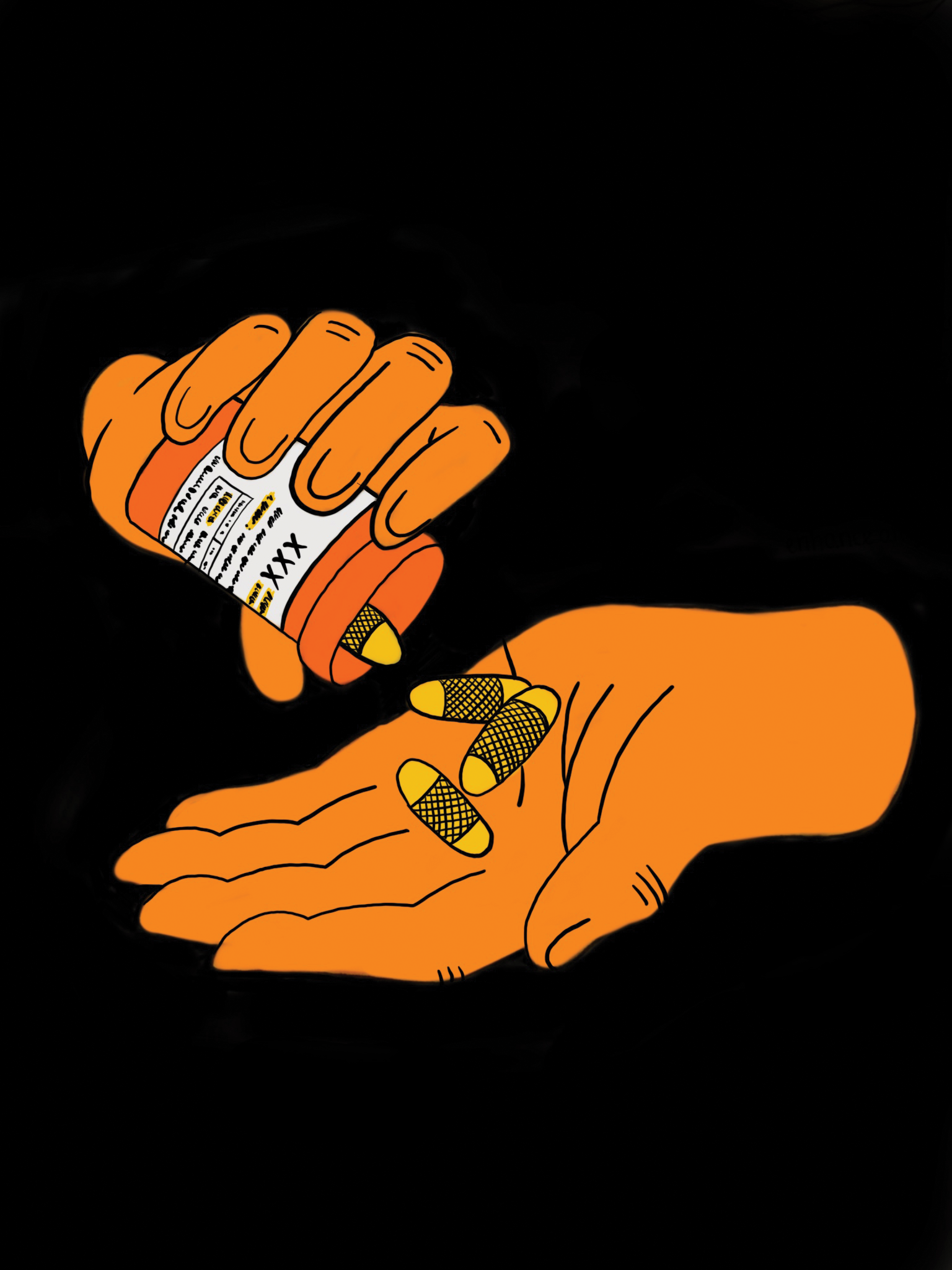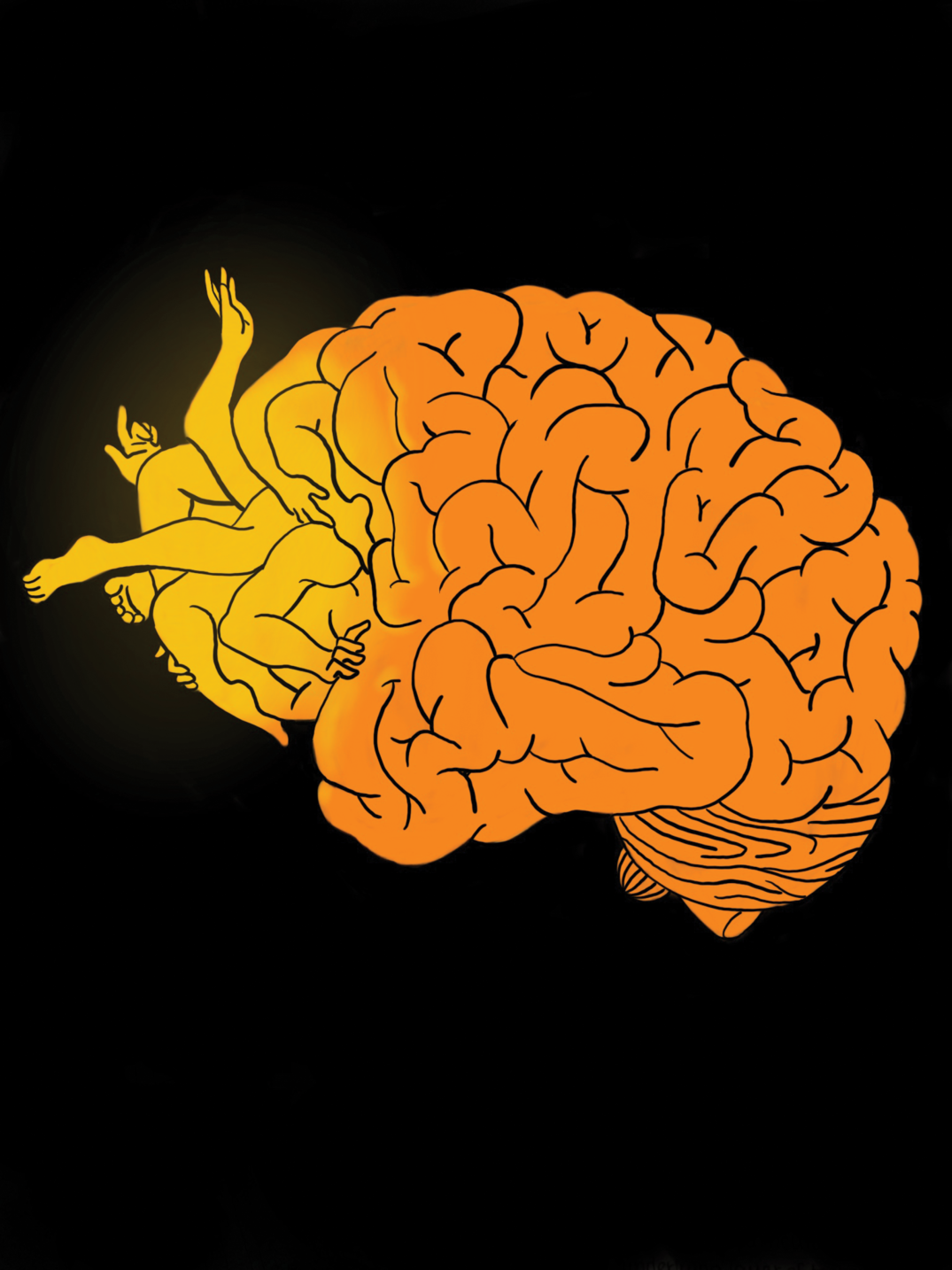Since the advent of the internet, pornography’s involvement in the lives of the public continues to increase. 66% of men and 41% of women view pornography monthly in the United States [1]. Pornography and the internet are so tightly linked that researchers estimate 50% of all internet traffic is sexually related [1]. The anonymity and accessibility of the internet allows pornography to reach a large audience. While we are still in the rudimentary stages of understanding the neurological consequences of pornography consumption, it is vital that we understand the effects of something so widespread, as it will ensure a more informed society with members who can make educated decisions about their mental health.
A recent study conducted in Australia asked pornography consumers whether the porn they watched had a positive or negative effect on their overall well-being. 59% of responders said that pornography had a positive effect, stating stress relief, open-mindedness, and educational insights as benefits [3]. In contrast, only 7% claimed the impact was negative, citing the unrealistic expectations in most pornographic content as well as the prospect of pornography addiction as reasons for their claim [3]. Clearly, a majority of pornography consumers believe they benefit from its use, but to what extent is this true?
Violence is a common theme in pornographic content, although characterization for how much violence is in pornography varies. Scientifically, what is considered violence remains vague and difficult to measure. It is beneficial to explore if, and to what extent, pornographic violence affects the brain and whether this is cause for legitimate concern.
There is discussion in the scientific community over whether mirror neurons affect the spread of violence and if so, to what extent they do [4]. Mirror neurons were discovered in masque monkeys in the early 1990s when researchers found that neurons in the F5 region of the masque monkeys’ premotor cortex activated while the researchers and the monkeys grasped peanuts [5]. To the researchers’ surprise, the same neurons were activated when the monkeys grasped the peanuts as when they merely watched someone else grasp the peanuts. Further research has shown evidence of a similar mirror system existing in humans. The presence of mirror neurons in the human brain would suggest that regions of the brain active while someone is viewing pornography are the same regions of the brain active while the person is actually having sex [4]. Though speculative, it is interesting whether the activation of mirror neurons during pornography consumption has the potential to affect sexual perception in other areas of life, especially in regard to pornography violence. Marco Iacoboni, a professor of psychiatry at UCLA who studies mirror neurons speculates that these systems have the potential to spread violent behavior due to how they contribute to other mimicking behavior in humans [6].
There are multiple theories concerning the function of mirror neurons. Some scientists believe mirror neurons work to mediate action understanding, while others argue their purpose is to facilitate action imitation [7]. The latter would suggest a possible correlation between viewing violent activity and the imitation of this activity through the function of mirror neurons. Though there is little research available to validate this speculation, it remains a possibility. Mirror neurons are an important aspect to how humans observe actions. As further research is conducted over the function, ability, and bounds of mirror neurons, more can be revealed about if viewing violence effects the spread of violent acts and how much, if at all, pornography contributes to this.

In addition to pornographic content, pornography addiction is also a widely discussed topic with a small amount of scientific research. Though pornography addiction affects a small portion of those who view pornography, the conversation surrounding this issue raises questions over what addiction is and whether someone can be classified as a pornography addict. The definition of addiction and how it is scientifically recognized remains open and controversial. Traditionally, addiction involves dependence on a substance such as drugs or alcohol, but as of late some have considered expanding this definition to include non-drug related habits. In 2011, the American Society of Addiction Medicine formally expanded their definition of addiction to include substances and behaviors, explaining that addiction includes the dysfunction of the brain reward circuitry accompanied by an individual habitually pursuing a given reward through a substance or particular behavior [2]. Despite this broadened definition, pornography addiction in particular is not currently recognized as an addiction [2].
If pornography is addictive, dopamine could be an explanation. Dopamine is a neurotransmitter that is well known for its role in the brain’s reward systems, as it is commonly referred to as the “feel-good” chemical of the brain. Dopamine neurons within the mesolimbic reward circuit respond to natural rewards such eating food, having sex, and other actions that are essential for survival of the species [8]. Use of drugs such as cocaine, methamphetamines, and opioids highjack this reward system by exaggerating the release of dopamine to unnatural levels [2]. Due to the elevated dopamine levels present in the brain while viewing pornography, it is easy to understand why some consider it a potentially addictive activity and why some who claim to be pornography addicts display similar brain activity to individuals addicted to drugs [2]. Until further research is conducted on pornography addiction, it is difficult to conclude what pornography addiction means neurologically and the possible long-term effects of porn exposure.
A 2014 study done by researchers at Cambridge University explored internet pornography addiction. They reported that 60% of subjects in the study had difficulty becoming aroused with real life sexual partners, yet had little to no difficulty achieving arousal while viewing pornography. This data suggests that frequent and impulsive pornography use may affect the body’s physiological responses to sex [2]. In contrast, a more recent study done in 2015 found that a higher amount of pornography consumption actually heightened real life sexual behavior as opposed to hindering it [9]. The contradiction of these two studies shows how individuals react differently to pornography and, more importantly, highlights the complexity of pornography addiction and the truth that research on this topic is still in its infancy.

Pornography is a complex and controversial topic to address, as it affects peoples’ lives in different ways. When addressing pornography in a scientific setting, the biases surrounding this issue must be withheld. Due to moral and social stigmas surrounding pornography, a limited amount of research has been conducted, but it is worth exploring the current discussions surrounding it. Many aspects of pornography are difficult to translate into a scientific conversation due to their unclear definitions. For example, violence in pornography as well as pornography addiction are relevant and important areas of discussion, yet are difficult to define scientifically. Although people draw conclusions over how pornography affects individuals on the social and psychological levels, scientific evidence of pornography’s neurological effects remains inconclusive. We must continue to research the effects of pornography in order to understand this widespread behavior and its potential influence on the brain.
References
- American Psychiatric Association. (2013). Diagnostic and statistical manual of mental disorders: DSM-5. Washington, D.C: American Psychiatric Association.
- Kessler RC, Chiu WT, Demler O, Walters EE. (2005). Prevalence, severity, and comorbidity of twelve-month DSM-IV disorders in the National Comorbidity Survey Replication (NCS-R). Archives of General Psychiatry. 62: 617-27.
- Attwells S., Setiawan E., Wilson A. (2017). Inflammation in the Neurocircuitry of Obsessive-Compulsive Disorder. JAMA Psychiatry. 74: 833-840.
- McGuire PK, Bench CJ, Frith CD, Marks IM, Frackowiak RS, Dolan RJ. (1994). Functional anatomy of obsessive-compulsive phenomena. Br. J. Psychiatry. 164: 459-68.
- Ting J, Feng G. (2011). Neurobiology of obsessive–compulsive disorder: insights into neural circuitry dysfunction through mouse genetics. Current Opinion in Neurobiology. 21: 842-848.
- Nakao T, Okada K, Kanba S. (2014). Neurobiological model of obsessive–compulsive disorder: Evidence from recent neuropsychological and neuroimaging findings. Psychiatry and Clinical Neurosciences. 68: 587-605.
- Nakao T, Okada K, Kanba S. (2014). Neurobiological model of obsessive-compulsive disorder: evidence from recent neuropsychological and neuroimaging findings. Psychiatry Clin Neurosci. 68:587-605
- Ahmari S, Spellman T, Douglass N, Kheirbek M, Simpson B, Deisseroth K, Gordon J, Hen R. (2013). Repeated Cortico-Striatal Stimulation Generates Persistent OCD-Like Behavior. 6137: 1234-1239
- Mulders A, Plantinga B, Schruers K, Duits A, Janssen M, Ackermans L, Leentjens A, Jahanshahi A, Temei Y. (2016). Deep brain stimulation of the subthalamic nucleus in obsessive-compulsive disorder: Neuroanatomical and pathophysiological considerations. European Neuropsychopharmacology. 26: 1909-1919.
- Kamaradova D, Hajda M,Prasko J, Taborsky J, Grambal A, Latalova K, Ociskova M, Brunovsky M, Hlustik P. (2016). Cognitive deficits in patients with obsessive–compulsive disorder – electroencephalography correlates. Neuropsychiatr Dis Treat. 12: 1119–
- Swedo S, Leonard H, Garvey M, Mittleman B, Allen A, Perlmutter S, Dow S, Zamkoff J, Dubbert B, Lougee L. (1998). Pediatric Autoimmune Neuropsychiatric Disorders Associated With Streptococcal Infections: Clinical Description of the First 50 Cases. The American Journal of Psychiatry. 155: 264-271
- PANDAS-Questions and Answers. (n.d.). Retrieved October 30, 2017, from https://www.nimh.nih.gov/health/publications/pandas/index.shtml .
- PANDAS: Effects on the brain. (n.d.) Retrieved December 14, 2017, from http://www.pandasnetwork.org/understanding-pandaspans/effects-on-the-brain/
- Najjar S, Pearlman D, Alper K, Najjar A, Devinsky O. (2013). Neuroinflammation and psychiatric illness. Journal of Neuroinflammation. 10: 816.
- Hage A, Banaschewski T, Buitelaar J, Dijkhuizen R, Franke B, Lythgoe D, Mechler K, Williams S, Dittmann R. (2016). Glutamatergic medication in the treatment of obsessive compulsive disorder (OCD) and autism spectrum disorder (ASD) – study protocol for a randomised controlled trial. Trials. 17: 141.
- Chen SK, Tvrdik P, Peden E, Cho S, Wu S, Spangrude G, Capecchi MR. (2010). Hematopoietic origin of pathological grooming in Hoxb8 mutant mice. Cell. 141: 775-85.
- Lui H, Zhang J, Makinson S, Cahill M, Kelley K, Huang HY, Shang Y, Oldham M, Martens L, Gao F, Coppola G, Sloan S, Hsieh C,Kim C, Bigio E, Weintraub S, Mesulam MM, Rademakers R, Mackenzie I, Seeley W, Karydas A, Miller B, Borroni B, Ghidoni R, Farese R, Paz J, Barres B, Huang E. (2016). Progranulin Deficiency Promotes Circuit-Specific Synaptic Pruning by Microglia via Complement Activation. 165: 921–935.
- Harvard Health Publishing (n.d.). Treating obsessive-compulsive disorder. Retrieved October 31, 2017, from https://www.health.harvard.edu/mind-and-mood/treating-obsessive-compulsive-disorder .
- Brain Surgery for OCD. (2014). Retrieved October 31, 2017, from https://iocdf.org/about-ocd/treatment/brain-surgery-for-ocd/
- Rück C, Karlsson A, Steele D. (2008). Capsulotomy for Obsessive-Compulsive Disorder. Arch Gen Psychiatry . 65:914-922
- Zaehle T, Galazky I. (2017). Effects of deep brain stimulation of the subthalamic nucleus on perceptual decision making. Neuroscience. 343: 140-146.
- Greenberg B, Malone D, Friehs G, Rezai A, Kubu C, Malloy P, Salloway S, Okun M, Goodman W, Rasmussen S. (2006). Three-Year Outcomes in Deep Brain Stimulation for Highly Resistant Obsessive–Compulsive Disorder. Neuropsychopharmacology . 31: 2384–2393
- Deep Brain Stimulation for Highly Treatment-Resistant OCD. (2017). Retrieved October 31, 2017, from https://iocdf.org/expert-opinions/expert-opinion-dbs/
- CAMH researchers discover brain inflammation in people with OCD. (n.d.). Retrieved October 31, 2017, from http://www.camh.ca/en/hospital/about_camh/newsroom/news_releases_media_advisories_and_backgrounders/current_year/Pages/CAMH-researchers-discover-brain-inflammation-in-people-with-OCD.aspx
- Tikka T, Koistinaho J. (2001). Minocycline Provides Neuroprotection Against N-Methyl-d-aspartate Neurotoxicity by Inhibiting Microglia. J Immunol. 166: 7527-7533
- Ruscio A, Stein D, Chiu W, Kessler R. (2010). The epidemiology of obsessive-compulsive disorder in the National Comorbidity Survey Replication. Mol Psychiatry. 15:53-63
